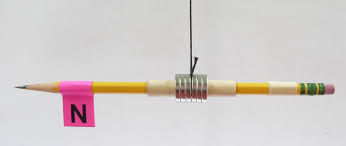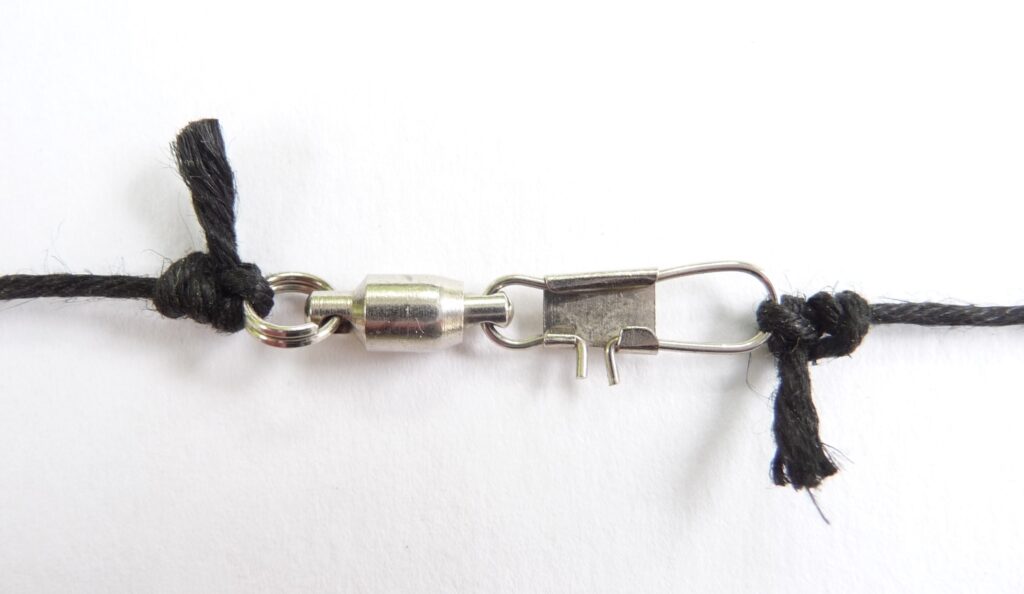 by: Martin Sagendorf
by: Martin Sagendorf
We recognize heat & cold, dry & damp, light & dark, and sound & silence. However… I find it absolutely fascinating to consider that we also live within something that we can’t see, hear, touch, or taste.
We all Know:
Our planet has a giant magnet near its core and that its field extends over the whole of the Earth’s surface. But, do we ever really think about this field that passes through soil, rocks, buildings… and us? Granted, relatively speaking this ‘field’ isn’t particularly strong. In fact, it’s a rather weak field when compared to those of a horseshoe magnet or, particularly, a modern Rare Earth magnet.
A Great Demo to show Earth’s Magnetic Field:
Uses a few very strong Rare Earth magnets to illustrate that this field really is everywhere – even in the classroom. What we want to make is a really graphic and dynamic demonstration.
It’s Easy to do:
Just hang a magnet from the ceiling – Any bar or ‘donut’ magnet will align itself to the Earth’s magnetic field. Here’s a very effective construction:
Materials:
- A new pencil with eraser (7-1/2” long)
- 6 rare earth (Neodymium) ring magnets (E.I. 25 Pack of Neodymium Magnets #M-187)
- 5 feet of light-weight string or heavy thread (or very light fishing line)
- A ‘flag’ indicating N (cardstock: 3/4” x 2-1/2”)
- A 24” length of 3/4” or 1” wide masking tape
- A few inches of clear tape or Glue (Duco®)
- A very small ball bearing ‘fishing swivel’
Construction:
- Sharpen the pencil
- At 3-1/4” from the top of the eraser, tie one end of the cord around the pencil (look on the Internet to see how to tie an ‘Improved Clinch Knot’ – use two turns – this knot really works quite well)
- Using a single Ring Magnet as a measure, wrap masking tape around the pencil on both sides of where the string is tied to the pencil – wrap-on sufficient lengths to make a snug fit for the magnet (this will be about 12” per side)
- Make up two magnet stacks with three magnets in each
- Use a magnetic compass to determine the ‘polarity’ of the stacks – the stack ends that attract the south-pointing end of the needle are the ‘north ends’ of the magnets – you’ll want these ends to be towards the sharpened end of the pencil
- Slip the stacks of magnets over the ends of the pencil – the stacks will be aligned so they are attractive – carefully move the stacks together (on) each side of the cord
- Hang the assembly from an overhead support
- Place the N flag over the sharpened end of the pencil – centered about 1-1/2” from the pencil point
- The pencil should hang nearly horizontally
- To adjust any deviation from horizontal, add some masking tape on the appropriate side of the pencil
- Once level, use clear tape or glue to fasten the flag
- Splice the fishing swivel into the cord – about 12” above the pencil – use knots as above
In Use:
Suspend the unit from the classroom ceiling such that it is just accessible for ‘spinning’ by students entering the classroom. This will become an everyday occurrence.
This Simple Device Illustrates:
- That the Earth’s magnetic field is everywhere
- A force we can’t see or feel (directly)
- ‘Force-at-a-Distance’
- That the very small magnetic field (force) from a nearby hand-held magnet is sufficient to cause a disturbance in the ‘local’ magnetic field (even if a magnet is totally grasped within one’s hand – the magnetic field simply goes right through one’s hand)
Notes:
- These little magnets are very strong – be very careful when handling them
- When separating the magnets, slide them apart one-by-one
- When placing magnets together – do so with caution – they will very suddenly attract each other
- These magnets will fracture if subjected to an impact force – wear safety glasses
- Keep the magnets well away from credit cards and other magnetic storage devices
- ‘Spinning’ may result in ‘wind-up’ (a residual twist) in the cord – especially so when using a ‘stiffer’ cord (e.g. light-weight fishing line) – the pencil may ‘come short’ of pointing at North. The fishing swivel (the smallest one you can find) will minimize this. But, even with the swivel, there will be times that it cannot completely compensate for the wind-up – if this happens, simply lift the pencil very slightly to release the twist in the cord. As an aside, fishing swivels usually come several to a package – choose the one with the smoothest action and place a drop of very light oil inside it.
Marty Sagendorf is the author of the book Physics Demonstration Apparatus. This amazing book is available through Educational Innovations and includes ideas and construction details, including all equipment necessary, for the creation and use of a wide spectrum of awe inspiring physics demonstrations and laboratory equipment. Included are 48 detailed sections describing hands-on apparatus illustrating mechanical, electrical, acoustical, thermal, optical, gravitational, and magnetic topics. This book also includes sections on tips and hints, materials sources, and reproducible labels.

